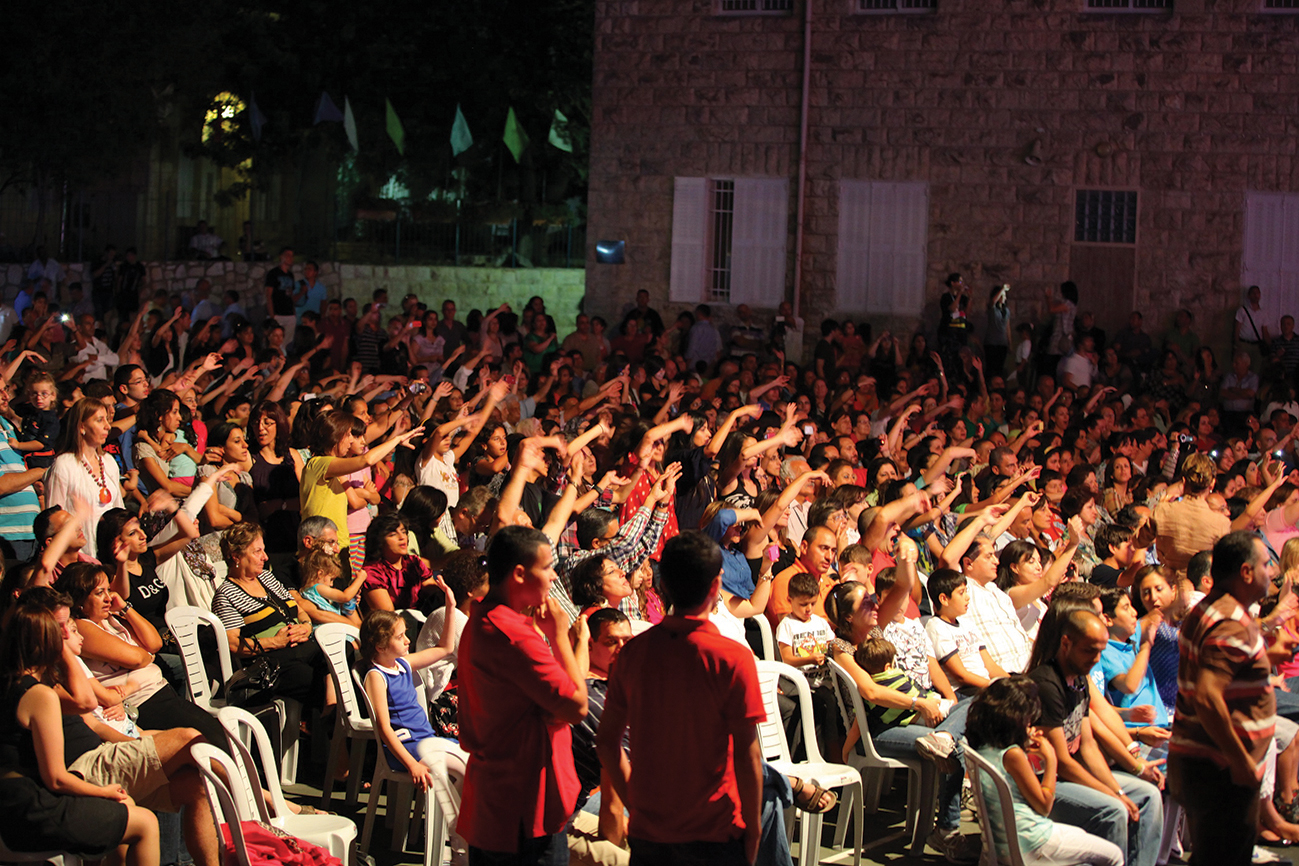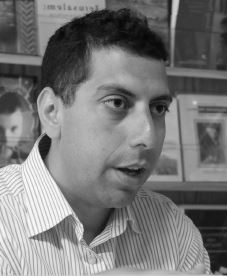Since 1967, Jerusalem has become a torn city, divided and confused, stressed and angry, hard to charm – and impossible to understand. During the last fifty years of occupation, Israel has tried every single trick in the book to change the character of the city, to destabilize its community by strangling its economy and reinventing the historical narrative, by manufacturing archaeological artifacts and manipulating biblical references. The Arab League, on the other hand, in an attempt to reconcile their failure towards the city, nominated Jerusalem as the 2009 Cultural Capital of the Arab World, a declaration that subsequently was extended, declaring that Jerusalem is to remain the cultural capital until its liberation from the Israeli occupation.
While some will argue that Israel has managed to Judaize the city, many consider the obvious and strong presence of an Arab population as a testimony to the failure of complete eradication of the Arab identity of the city. However, many of the close to 300,000 Palestinian residents in the city are under intense social and financial pressure, which is exerted intentionally in order to force them to leave and seek life somewhere else, where they will face less stress and hardship.
To maintain their vibrant and lively presence in the city, Jerusalemites frequently look to an unusual avenue for hope: Culture. Banking on the power of culture when forced to live under a culture of power, many consider the arts and cultural engagement as their last defense against alienation, fragmentation, and displacement. Whereas in most parts of the world culture serves as a form of entertainment, in Jerusalem culture has become not only a vehicle for social and political change, even more it is a strong and steady assertion of identity. For cultural planners and managers, culture has become synonymous with sumud, Arabic for resilience and steadfastness.

With this additional objective, cultural planners and executives are presented with a set of both opportunities and challenges. Challenges stem from the need for a new way of thinking, an alternative philosophy, and a different strategy of implementation. Jerusalem’s cultural institutions are asked to think both on the micro and macro levels; they must achieve the organization’s own aims and objectives while simultaneously staying in harmony with the larger national aspirations to which their society can relate. In some fields, this is easily done. For example, literature, photography, theatre, and cinema are rather close to people’s daily reality. But genres such as conceptual art or modern performance art are facing more challenges.
A total of eight cultural institutions are active in East Jerusalem: a theatre, a museum, a music school, two art galleries, a multidisciplinary culture center, and two bookshops. However, a prevailing lack of sources to provide funding and the absence of a collective strategy to remedy this situation are forming a vacuum that is currently filled by international organizations, diplomatic missions, and the small but growing private sector. But funding from international organizations generally comes with strings attached: the allocations are seasonal, themed, and frequently politically motivated, which leaves little room for maneuver. This donor-driven culture has irritated audiences of cultural events in the city and marginalizes local artists and writers. Local culture- and art creators who are not attractive to donors for their funding have become not affordable, even if their works are interesting, artistically valuable, or relevant to social and political change.
For many cultural institutions, another primary challenge is the lack of an audience – which contributes to the assumption that Jerusalemites do not appreciate or participate in culture. This conjecture is not only factually inaccurate but also insulting. Jerusalemites are known for their sophistication in general and for a cultured past in particular; it would be more accurate to say that Jerusalemites no longer attend cultural activities en masse because they do not see the value and relevance of the activities on offer – particularly when many of these activities are made available to fulfill the agendas and objectives of international donors.
Thus, demanding audiences and challenging planning conditions within a complicated and contradictory political and social landscape have resulted in the phenomenon of cultural migration to cities around Jerusalem. For culture to flourish, a fertile soil and encouraging climate are necessary, but sadly, such prerequisites are often unavailable in Jerusalem. As a result, another city has been presenting itself as the magnet for culture. Many consider Ramallah as the newly-emerging cultural hub. Although it lacks any historical, biblical, or archeological significance, Ramallah is increasingly enjoying a positive cultural climate and vibrant cultural scene, as manifested in its busy cultural agenda and high levels of participation.
In most parts of the world, cultural managers will argue in favor of such growing cultural competition between cities, in fact they will encourage it. However, and given the current geo-political condition, in the case of Jerusalem such a competition is dangerous and in my opinion should be challenged. The over-popularization of Ramallah and its promotion as an alternative cultural hub will indeed feed into the Israeli plan to realign the Palestinians of Jerusalem. It will help develop the notion that Ramallah is the de facto capital of Palestine, rather than Jerusalem. The fact that all governmental organization are based in Ramallah – even though twenty-five years ago this was considered as a temporary solution, to be remedied based on final negotiations – as are banks, insurance companies, and the main trade and finance institutions, further cements Ramallah’s position.
The salty-sweet competition between Jerusalem and Ramallah is simply unfair, as the two cities are not equal and cannot be compared. Both cities should be encouraged to develop their own relevant cultural identity, as they have certainly much to offer. Ramallah maintains a relaxed, outgoing ambiance, while Jerusalem radiates with its heavy-weight, deeply rooted history and religious focus. However, Jerusalem should always be treated as the future capital of Palestine, and the cultural programming should reflect this desired reality.
Within these contradicting dynamics, cultural managers have to navigate their way for a balanced situation, while collectively challenging the conditions, and dictate the terms in order to break new grounds. This could be done through the establishment of an informal body or a form of umbrella organization under which the cultural institutions can communicate, coordinate and organize. This will eventually lead to a collective position and shared strategy for the Jerusalem cultural scene beyond the mere interest of the individual organizations.



